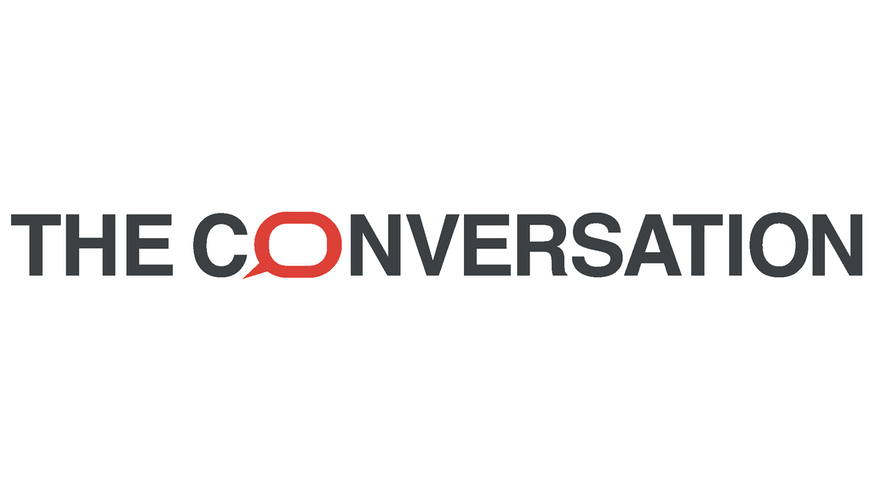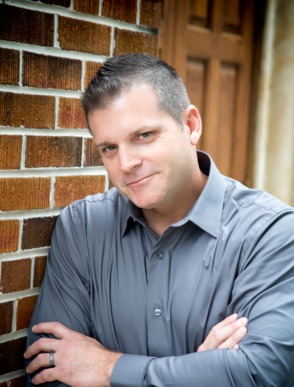
I have, for quite a long time, not been a big fan of lectures as a primary way of fostering learning and the positive transformations that accompany learning at its best—particularly when the learning is centered around training sessions for adults in workplace settings. Within the learning environments onsite and online in which I most frequently work, learning is doing and doing is learning—which leaves lengthy formal lectures near the bottom of my learning toolkit in most situations. And I can’t say that I have changed my mind substantially. But reading an article—“Good Riddance to Boring Lectures? Technology Isn’t the Answer—Understanding Good Teaching Is,” by Christopher Charles Deneen and Michael Cowling for TheConversation.com—brought to my attention by ShapingEDU colleague Kim Flintoff, has inspired some rethinking on the subject—particularly after engaging in an unexpected set of asynchronous exchanges with colleagues via Facebook.
The article by Deneen and Cowling is thoughtful, balanced, and inspiring. The writers begin by describing how a vice chancellor at an Australian university is suggesting that as students return to onsite learning this year, lectures “would be much less common and not a ‘crutch for poor pedagogy.’” They deftly dive into an exploration of the idea that lectures will “be replaced by superior, technology-enhanced substitutes.” And after exploring our long-standing love-hate relationship with lectures in learning, they circle back to what is, for me, a perfect, well-reasoned conclusion: “We need to reject the notion that lectures will sink our students and technology will save them. Instead, let’s dig deeply and critically into both, reflect upon how to improve our practices, and apply sound teaching methods and practices to create learning engagements that are captivating and profound.”

Kim, in posting (on Facebook) a link to the article, offered the briefest of comments: “I think the issue is engagement. Some lecturers can be very engaging. Many are not. Creating space for the learner is one of the criteria for engagement.” And that’s where the fun starts, for Barry Altland, a cherished ATD (Association for Talent Development) colleague here in the United States, responded to Kim’s comment with this opening salvo: “This [comment] states the ‘lecturers can be engaging.’ By their very definition, they are not. Facilitators are. But lecturers, presenters, speakers and instructors are not. Nor are teachers. For those are all movements that one does ‘at’ another, not ‘with’ another. Only a Facilitator invites the voices of many others into the learning conversation.”
My response did little to hide my surprise: “I’m seeing the ‘lecture’ format evolve in engaging ways, and don’t sense that an appreciation for what first-rate facilitators inspire and accomplish precludes an appreciation for what a first-rate lecturer inspires and accomplishes. 2) I wouldn’t trade memories of lectures I have attended by Stephen Jay Gould, David Halberstam, Ann Patchett, Eric Whitacre, Jeremy Gutsche, R. David Lankes, and numerous others for anything. Furthermore, TED talks I’ve seen or attended suggest how vibrant, engaging, and transformative a lecture can be when the lecturer uses the power of storytelling to draw us into powerful communal experiences. And the best of the teacher-lecturers I’ve found in formal academic settings have had a lifelong impact on my approach to work, learning, and play. Really sorry if you haven’t had experiences along those lines. As Lankes would say: Expect More!”

Dave himself, tagged in my response on Facebook, almost immediately joined the conversation: “The best lectures stimulate a dialog within the individual. A good book can be engaging, a song can change a life.” Which drew a response from Barry: “Books and songs are inanimate. When human beings come together, they both have something to offer the learning moment.”

With the ball back in Dave’s court, the exchange continued: “You used the word ‘engagement.’ A good lecture spawns conversations, internal and between people. Also, a lecture can absolutely be interactive one to many and many to one. I absolutely know the power of facilitated learning and workshops. Mastery requires going beyond lectures to practice. But to dismiss lectures as a simple broadcast of inherently less value I find problematic.”

Other colleagues contributed to the exchange. My T is for Training colleague Jill Hurst-Wahl, in a series of posts, began by saying “I would add Larry Lessig as a person who gives engaging lectures. From what I’ve seen of her, I think Rep. Katie Porter would be a very engaging lecturer.”
Quoting from the original article, Jill continued: “‘Instead, let’s dig deeply and critically into both, reflect upon how to improve our practices, and apply sound teaching methods and practices to create learning engagements that are captivating and profound.’ I like the phrase ‘how to improve our practices.’ We are not taught as teachers how to improve our lectures. I remember when I joined my academic institution, I asked for advice on how to prepare for three-hour class and was told that what I did was up to me. I would have welcomed advice and training! Over the years, I have learned from workshops, by watching others, and by doing. Imagine if all teachers—no matter how they got into the profession—were taught on how to be engaging when they needed to lecture?”
And directing her final contribution to Dave, she added the following: “Like a lecture, if a book, song, video, etc. causes me to think deeply and have a conversation with myself, I will learn.”

The final contribution (at least up to this moment) comes from long-time ATD (Association for Talent Development) South Florida Chapter colleague Laura Fothergill: “Loved the article, really dislike the title and perpetuation of us vs them (lecture vs technology). Can we stop even putting this into the ethos? Why not title it ‘Be critical, be reflective, be better’ or ‘Lose your Assumptions.’ By spinning the concepts into either or and inviting that conversation we are not helping individual faculty with their own personal professional development.” So, in a relatively brief period of time, we went from lectures and learning to whether lectures and lecturers (and presenters, speakers, instructors, and teachers) could even be engaging or whether engagement was exclusive to facilitators. And, just for good measure, Dave and Jill took us down the intriguing path of what learning is and how we learn, with Laura advocating for elimination of the us vs. them element of our explorations.
Although the obvious starting point for me is a preference for a “learners as co-conspirators in the learning process” approach to learning (as compared to the boringly passive approach to learning that is obvious in the worst of lectures and lecturers) in the settings in which I work, I was intrigued by the fond memories of what I had learned from the best lecturers I have heard—and I also thought about how my own approach to “lectures” has continued to evolve. When I work synchronously face-to-face onsite, online, or in blended environments (combining onsite and online learning into a cohesive, seamless package), I play with and combine numerous approaches. I find it rewarding, for example, to follow a Flipped Classroom model approach by providing learners with pre-session prep work (videos or short articles) so that our time together “face to face” onsite or online focuses on application of what we have learned—with a strong emphasis on what the learners will do with their newly-acquired knowledge/skills the minute our time together comes to an end. In asynchronous settings (e.g., through the four-week online courses I design and facilitate for the American Library Association), I start with weekly “typed lectures” that provide my own content interspersed with plenty of links to other people’s videos, articles, and online, easily accessible resources to support the learners’ explorations. I also include focused exercises that encourage the learners to apply what they are learning, interact with other learners, and even adapt the assignments in ways that produce something they can use in their own workplaces while and after the course is underway. The emphasis is always on having learners define what they need to know and encouraging them to focus on what addresses their learning needs as quickly as possible.

Just as participation in a creative online learning opportunity exploring The Innovator’s Mindset (led by George Couros in 2017) made me rethink my perceptions about what “reading” is in the early 21st century, the exchanges via Facebook have inspired me to further rethink my perceptions about what a great “lecture” is in contemporary times. It is focused. It is engaging. It inspires inquisitiveness by serving as an invitation to explore a topic further. It can—but doesn’t necessarily have to—be creative in its use of tools available to the lecturer and the people sharing in that learning experience. (I often think, for example, of how Jonathan Haidt so effectively turned the TED Talk lecture format on its head by doing a formal lecture that “ended” a few minutes early so he could offer an entirely different version, during the final few minutes of his allotted time, by seamlessly and in the most stunningly successful of ways completely integrating video into the live presentation. I also think of how effectively Eric Whitacre incorporated a demonstration of a virtual choir into a live lecture on virtual choirs at a conference I attended a few years ago.) The learning, in each of these cases, was effective, engaging, inspirational, and transformative—because of, not in spite of, the “lecture” format. The rethinking continued over the weekend when I finally made time to watch the first couple of lectures in The Great Courses’ series on “The Learning Brain”—a series of 24 30-minute lectures captured on a CD and accompanied by a course guidebook. As I sat there in the comfort of my own home with the book in hand and the first few minutes of the video playing, an obvious revelation struck: The lecture can very much be a like a part of a spoken (audio) book, and the book can very much be like a set of printed lectures–even if it isn’t actually one of those lovely books providing the text of lectures. Both, when produced effectively, can be and are engaging. Dropping them completely from our learning toolkits makes no sense to me, and arguing against them in absolute, non-nuanced terms, seems counterproductive. The important decision to be made is when each is the best tool for a particular learning situation, and then to produce the best version of the learning resource that we possibly can produce. So we learn. With our learners. To inspire the best results possible.



 Posted by paulsignorelli
Posted by paulsignorelli 